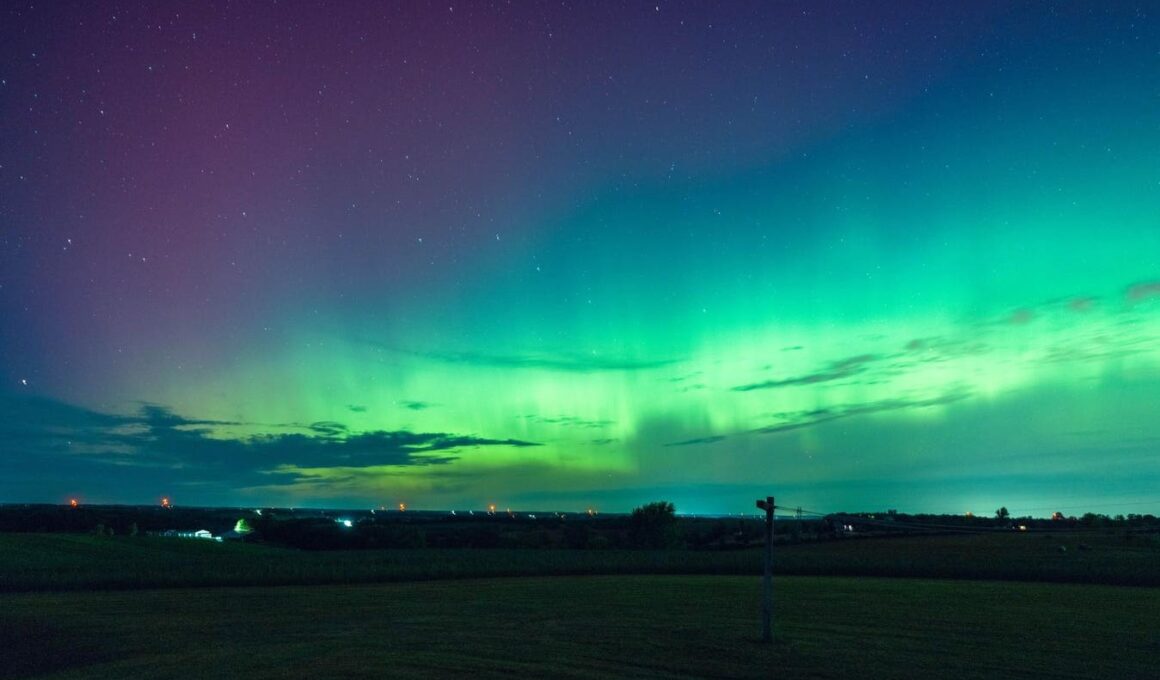Topline
Parts of the northern-most U.S. will have yet another chance to see the Northern Lights this weekend as the National Oceanic and Atmospheric Administration issued an alert Saturday afternoon indicating the lights may be seen farther south than originally expected.
The Northern Lights in Wisconsin. (Photo by Ross Harried/NurPhoto via Getty Images)
Key Facts
Saturday’s aurora borealis forecast predicts a KP index of seven, meaning forecasters expect the aurora to become “ quite bright and active” and provide a viewing possibility for the northern edge of the U.S., according to an alert NOAA.
NOAA’s space weather forecast for the weekend predicts moderate to high solar activity until Sunday at least, and expects a G3 storm—a strong geomagnetic storm capable of producing aurora visibility as low as Illinois and Oregon.
Saturday’s aurora forecast is more favorable than Sunday’s for those looking to get a glimpse at the Northern Lights, as the viewing line reaches slightly farther south into northern states.
Get Forbes Breaking News Text Alerts: We’re launching text message alerts so you’ll always know the biggest stories shaping the day’s headlines. Text “Alerts” to (201) 335-0739 or sign up here.
Where Will The Lights Be Visible Tonight?
NOAA’s updated alert stated the aurora could be seen tonight as far down as Pennsylvania, Iowa and Oregon. Most of Montana, North Dakota, Minnesota, Wisconsin, Michigan and Maine are above the viewing line (see map below) and have a varying chance at seeing the lights, along with the northern parts of Washington and Idaho.
Saturday’s viewing line.
How Do You See The Lights?
The window between 10 p.m. and 2 a.m. is the sweet spot for those looking to catch a glimpse at the Northern Lights, with areas free of cloud cover and minimal light pollution most suitable for viewing.
How Do You Photograph The Lights?
Those looking to snap photos of the phenomenon with their smartphones should use night mode and a slow shutter speed if possible.
Key Background
Increased solar activity impacting the northern U.S. and Canada has persisted since July, giving aurora borealis seekers multiple opportunities to catch the lights. Earlier this week, the Northern Lights and the Perseid meteor shower were seen in places such as New York, Poland, Spain and England. The jump in aurora borealis visibility is part of a larger stretch of solar activity experienced throughout 2024 and expected to increase as the sun approaches the peak of an 11-year solar cycle. NOAA has forecasted a 2025 peak of up to 115 sun spots, which are the source of geomagnetic storms before they produce auroras.
Further Reading
The Northern Lights seen from space (BBC)
Northern Lights And Perseid Meteor Shower Put On A Celestial Show Overnight (Photos) (Forbes)








